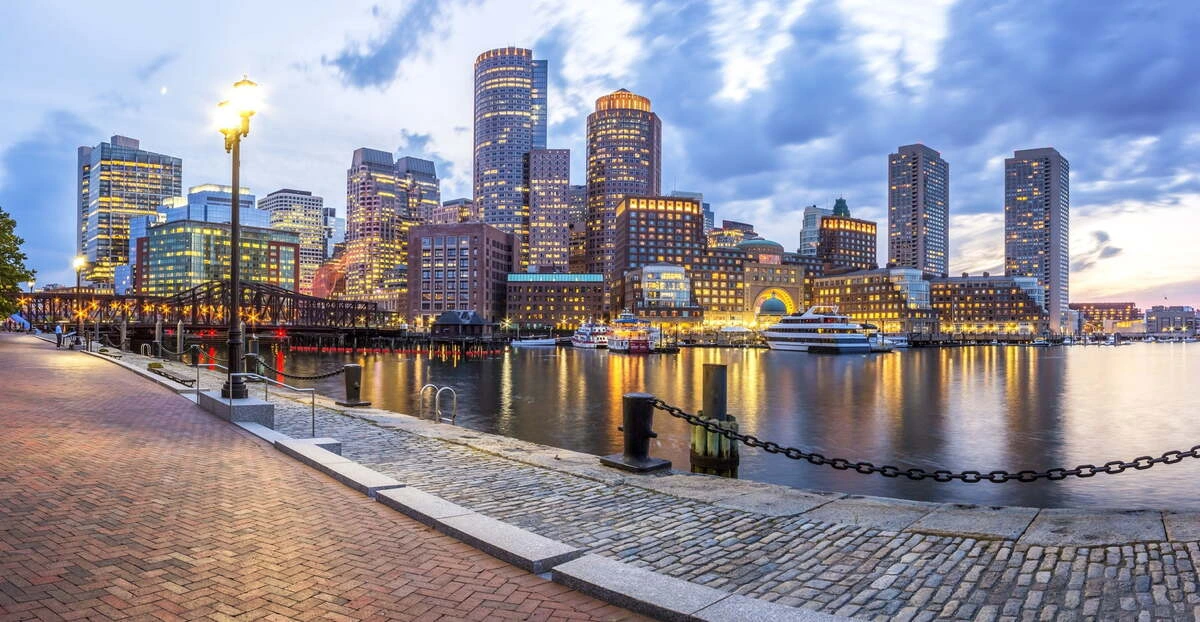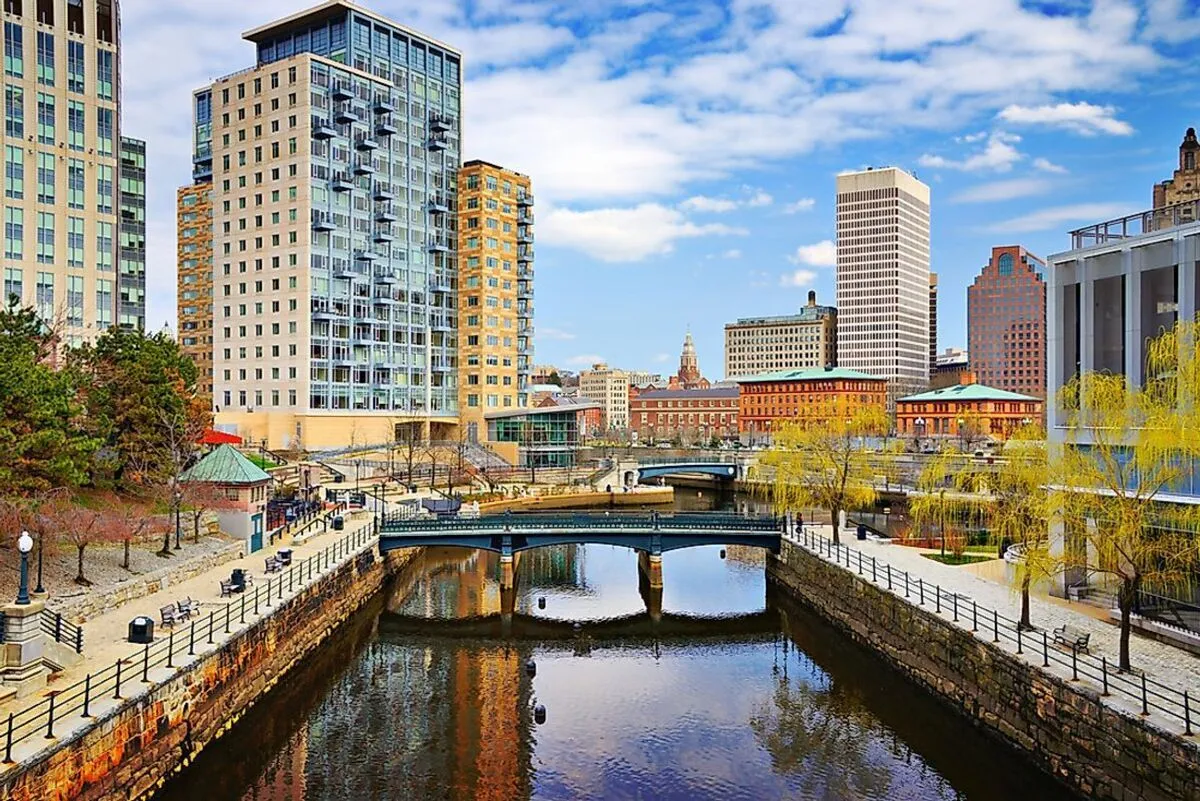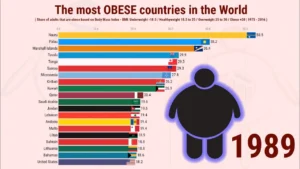Defining Expensive States
The United States has the world’s 26th most expensive cost of living. However, the cost of everyday expenses varies widely from state to state.
The cost of living encapsulates all essential expenses such as food, housing, healthcare, and transportation, reflecting the overall financial requirements for a person’s basic needs. These costs can exhibit significant variations from state to state, particularly soaring in major metropolitan areas. The Top 5 Most Expensive States to live in are typically situated in the Northeast, along the Pacific Coast, and in non-contiguous states, highlighting the considerable disparities in living expenses across different regions of the United States.
Housing costs drive the cost of living expenses since this is where Americans spend the largest portion of their income. Thus, areas where competition for housing is high will be the most expensive. Other factors that impact the cost of living include transportation costs, proximity to resources, childcare costs, and local taxes.
The cost of living index compares prices across states to better understand where they are the most expensive. The index uses the average cost of living in the U.S. as a baseline of 100. Expenses can be compared to this baseline to understand relative costs in different parts of the country. Any index above 100 represents a cost of living higher than the national average. The higher the index, the less a dollar will stretch.
The Cost of Living in the United States
To better understand the relative cost of living in the most expensive states, it’s helpful to have a better picture of the average costs in the nation. The average American household spends $61,334 a year to cover their expenses. Americans spend an average of $1,784 a month, nearly 35% of their income, on housing. The median price of a single-family dwelling in the United States is $273,992. The average cost of renting a two-bedroom apartment is $1,164 a month.
The average American household spends another 16%, or $9,826, on transportation. Annual healthcare costs are an average of $5,177 a year. Groceries and eating out cost the average American household $7,317 a year or $609.75 a month. Utilities cost an average American family $370.16 each month.
The average family of four in the United States requires $68,808 a year to cover their basic necessities like shelter, food, healthcare, and childcare. The median household income in the United States is $67,521 a year.
When evaluating the cost of living in the United States and identifying the most expensive states, a crucial factor considered is the cost of living index, which compares prices to the national average. However, it’s important to note that assessing the expense solely based on costs doesn’t provide the complete picture. Despite being labeled as the most expensive states to live in, their high dollar cost may be counterbalanced by local wages, ensuring a satisfactory quality of life. Now, let’s delve into the specifics of the Top 5 Most Expensive States to live in.
Top 5 Most Expensive States to Live in
| State | COLI Index |
| Hawaii | 179.00 |
| District of Columbia | 148.70 |
| Massachusetts | 148.40 |
| California | 134.50 |
| New York | 125.10 |
| Alaska | 124.40 |
| Maryland | 119.50 |
| Oregon | 115.10 |
| Washington | 115.10 |
| New Hampshire | 115.00 |
Hawaii
- Cost of Living Index: 193.3
- Groceries: 152.9
- Housing: 315
- Utilities: 164.2
- Transportation: 133.7
- Health: 115.3
- Miscellaneous: 126.7

Hawaii effortlessly claims the title of the priciest state to call home in the United States, securing its spot among the Top 5 Most Expensive States to live in. With a cost of living index soaring to 193.3, living expenses in Hawaii almost double the national average. The state leads in costs across various indices, except for healthcare. Housing expenses, for example, are three times higher than the national average, with the typical single-family home commanding a price tag of $730,511. The prospect of homeownership presents a challenge, as only 29% of residents can afford to purchase a home, marking one of the lowest rates nationwide. Renting also comes at a premium, with a two-bedroom apartment commanding a median cost of $2,399 and $3,500 in Honolulu.
Despite the substantial cost of living, Hawaii proudly boasts the fourth-lowest poverty rate. The median income for a family of four in the state stands at $118,223 annually, a figure that significantly exceeds the living wage benchmark of $107,702 per year.
New York
- Cost of Living Index: 148.2
- Groceries: 118.4
- Housing: 230.1
- Utilities: 99.8
- Transportation: 108.7
- Health: 102.5
- Miscellaneous: 113.7

Ranked as the second-most expensive state in the United States, New York is renowned for hosting the country’s priciest city, New York City. The cost of living index for the state is 148.2, with housing costs standing out as the second-highest nationwide, at 2.3 times the national average. In New York, the average cost for a two-bedroom apartment is $1,659, while in New York City, a comparable unit commands a much higher price of $5,874.
For those considering homeownership, the typical price for a single-family home in New York is $373,880. However, affordability remains a challenge, as only a quarter of residents have the means to purchase a new home based on their income. Remarkably, New York claims the seventh-lowest housing affordability rate and holds the title for the lowest rate of homeownership in the nation.
In terms of income, the median annual earnings for a family of four in New York stand at $111,054. Interestingly, this surpasses the living wage for a family of four in the state, which is calculated at $110,255. Now, let’s explore further insights into the Top 5 Most Expensive States to live in.
California
- Cost of Living Index: 142.2
- Groceries: 113.7
- Housing: 201.9
- Utilities: 124.3
- Transportation: 131.7
- Health: 110.7
- Miscellaneous: 110.3

California, securing its position as the third-most expensive state in the United States, boasts a cost of living index of 142.2. Notably, the state grapples with the nation’s highest gas prices, making transportation costs the second-highest across the country. Housing expenses in California stand at double the national average, with the standard single-family home commanding a price tag of $683,996. Homeownership rates in the state are the second-lowest nationwide, presenting a considerable challenge for residents. Renting a two-bedroom apartment in California comes with an average cost of $1,884, although major metropolitan areas like Los Angeles and San Francisco surpass these figures with some of the highest rents in the nation.
Despite the state’s significant cost of living, the median family income in California is $105,232 for a family of four, falling short of meeting the living wage requirement of $110,255 annually. Notably, California grapples with the highest rate of homelessness in the United States. Now, let’s explore further insights into the Top 5 Most Expensive States to live in, examining the unique challenges each one presents.
Massachusetts
- Cost of Living Index: 135
- Groceries: 119.3
- Housing: 177.6
- Utilities: 111.1
- Transportation: 111.3
- Health: 118.8
- Miscellaneous: 116.5

Securing its place as the third-most expensive state in the United States, California boasts a cost of living index of 142.2. Notably, the state faces the nation’s highest gas prices, ranking transportation costs as the second-highest nationwide. Housing expenses in California are double the national average, with a standard single-family home priced at $683,996. The state’s homeownership rates are the second-lowest in the country, posing a significant challenge for residents. Renting a two-bedroom apartment in California comes with an average cost of $1,884, and major metropolitan areas like Los Angeles and San Francisco surpass these figures with some of the highest rents in the nation.
Despite the considerable cost of living, the median family income in California is $105,232 for a family of four, falling short of the living wage requirement of $110,255 annually. Notably, California faces the highest rate of homelessness in the United States. Now, let’s delve into further insights into the challenges posed by the Top 5 Most Expensive States to live in, exploring the unique issues each one presents.
Oregon
- Cost of Living Index: 130.1
- Groceries: 107.8
- Housing: 172.6
- Utilities: 90.2
- Transportation: 125.9
- Health: 115.7
- Miscellaneous: 115.6

Oregon secures its place as the fifth-most expensive state to live in the nation, slightly surpassing the national average in overall costs. Notably, despite having some of the most affordable utilities in the country, Oregon grapples with one of the highest housing expenses. A standard single-family home in the state commands a price of $447,968, contributing to the challenge of home affordability, as fewer than a quarter of the population can comfortably afford a new home. Two-bedroom apartments, on the other hand, come with an average monthly cost of $1,343, while utilities amount to $333.27 per month for the average household.
While prices in Oregon exceed the national average, so do incomes. The state boasts a median income of $100,533 for a family of four, surpassing the annual living wage of $96,003 for a comparable family. Explore more about Oregon’s standing among the Top 5 Most Expensive States to live in.
Alaska
- Cost of Living Index: 127.1
- Groceries: 134.5
- Housing: 126.9
- Utilities: 154.8
- Transportation: 109.9
- Health: 154.2
- Miscellaneous: 114

Alaska is the sixth-most expensive state in the United States. The cost of living index for the state is 127.1. Healthcare in Alaska is the most expensive in the country. Housing costs are 26.9% higher than the national average, with the average single-family home costing $300,592. Two-bedroom apartments in Alaska cost $1,234 a month on average. Due to the remote nature of the state, goods are also expensive. Groceries are the second most costly in the nation, costing 35% more than the national average.
The median income for a family of four in Alaska is $101,965. A living wage for a family of four would only require $90,080. Alaskans also receive oil dividends that boost their incomes. However, despite the high levels of income, Alaska consistently ranks among the worst states to live in, mainly due to poor educational outcomes, high levels of violent crime, and low levels of opportunity.
Maryland
- Cost of Living Index: 124
- Groceries: 110.4
- Housing: 165.9
- Utilities: 105.1
- Transportation: 107.6
- Health: 82.8
- Miscellaneous: 105.2

Maryland is the seventh-most expensive state in the United States. Overall, prices are 24% higher than the national average, while housing prices are 66% higher. The typical single-family home in the state costs $366,581. However, despite the high cost of housing, Maryland has the second-highest house affordability, with 57.16% of residents having incomes that would support owning a home. A two-bedroom apartment rents for $1,647 a month. Healthcare costs are the second-lowest in the nation.
The median income for a family of four is $130,252 annually, substantially more than the $100,959 needed to make ends meet for a household with two working adults. Maryland has the fifth-lowest poverty level in the nation, with 9.1% of residents living at or below the poverty line.
Connecticut
- Cost of Living Index: 121.6
- Groceries: 106.4
- Housing: 134.6
- Utilities: 132.4
- Transportation: 111.1
- Health: 111.3
- Miscellaneous: 117.5

Connecticut’s cost of living index is 121.6, making it the eighth-most expensive state in the United States. The average single-family dwelling in the state costs $318,096, while rent for a two-bedroom apartment is $1,485 a month. Utilities are among the highest in the nation, costing an average of $438.21 a month.
Despite the high costs, incomes are also higher than average. The median income for a family of four is $120,379 annually, well above the $99,955 required for a living wage. However, the state’s unemployment rate is one of the nation’s highest, at 4.9%.
Rhode Island
- Cost of Living Index: 117.2
- Groceries: 107.7
- Housing: 121.7
- Utilities: 127.6
- Transportation: 107.6
- Health: 105.8
- Miscellaneous: 118.6

Rhode Island has a cost of living index of 117.2, making it the ninth most expensive in the United States. Housing costs are 21% higher than the national average, with a typical single-family dwelling costing $372,809. The average rent for a two-bedroom apartment in Rhode Island is $1,406 a month. Utility costs are high in the state, costing $404.21 a month.
Incomes in Rhode Island are also high. The median income for a family of four is $108,105 a year, while the living wage is $95,005.
Vermont
- Cost of Living Index: 117
- Groceries: 109.2
- Housing: 136.2
- Utilities: 119
- Transportation: 114.2
- Health: 99.3
- Miscellaneous: 104.3

Vermont is the tenth-most expensive state in the United States. Overall, costs are 17% higher than the national average. Vermont has the nation’s eighth-highest housing costs, with a single-family dwelling costing $299,998. However, housing affordability in the state is the lowest in the country, with only 15% of residents making a wage that could support purchasing a new home. A typical, two-bedroom apartment costs $980 a month.
The median income in Vermont is $111,095 for a family of four, while the living wage is $96,665.


